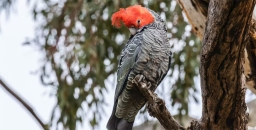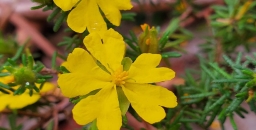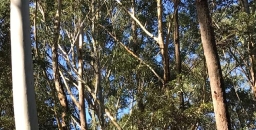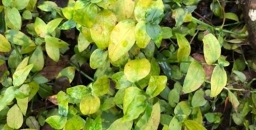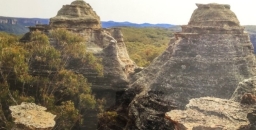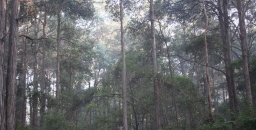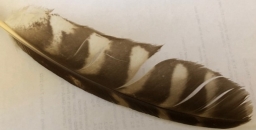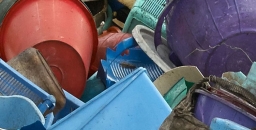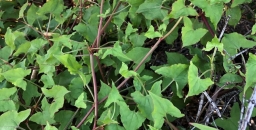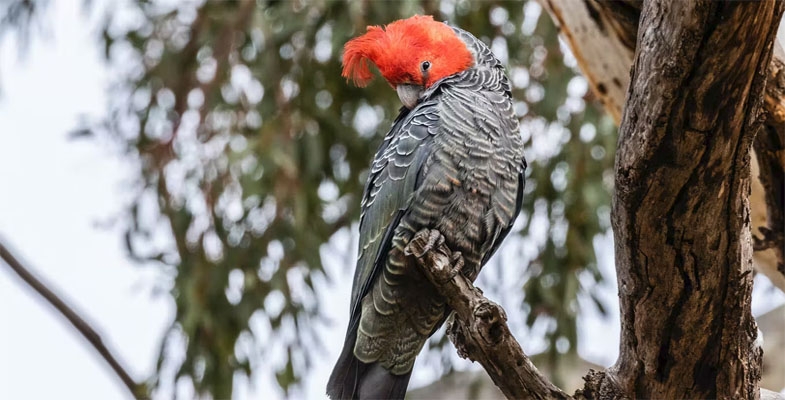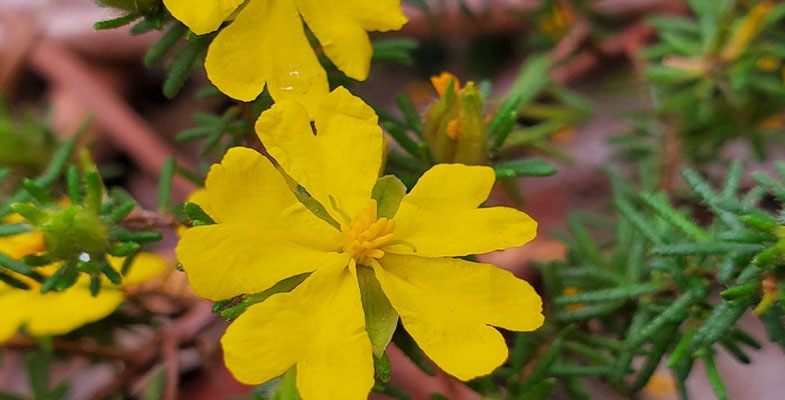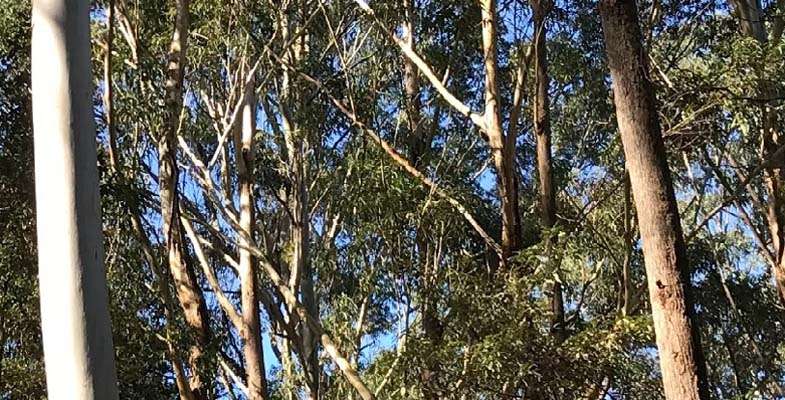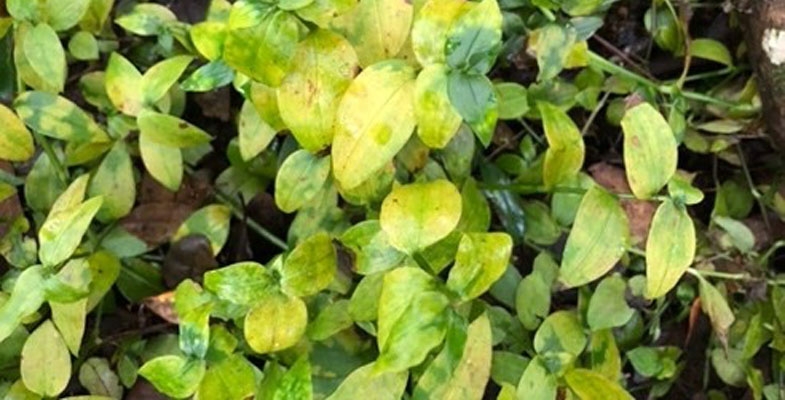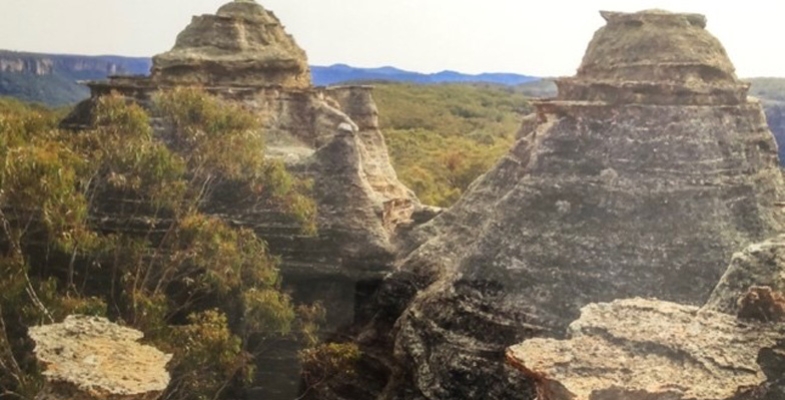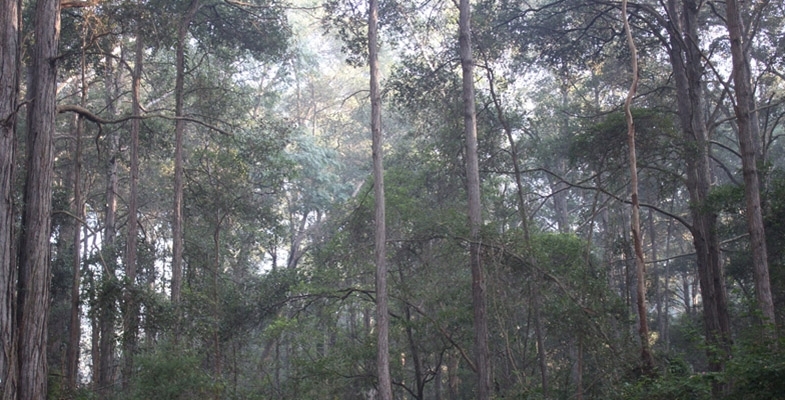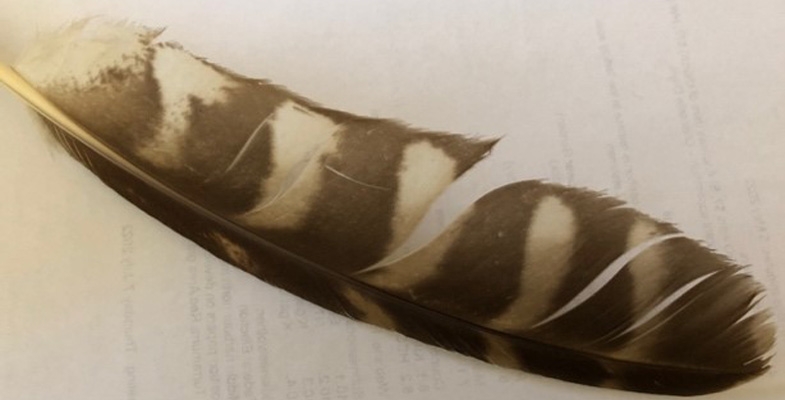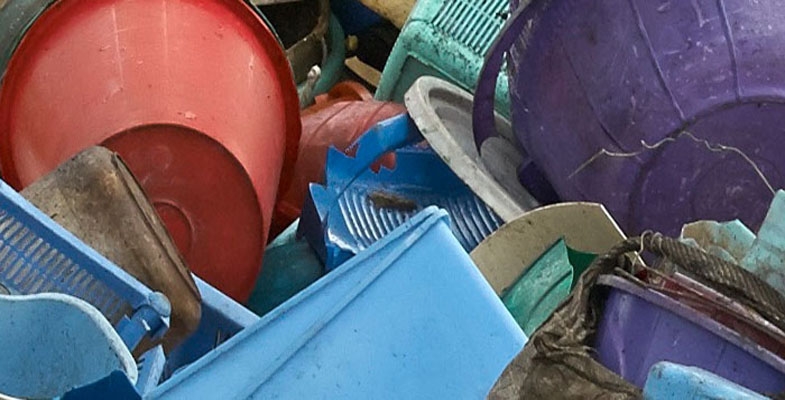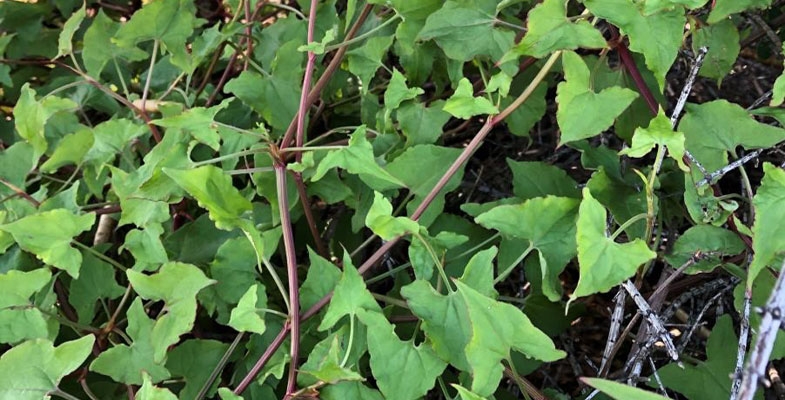STEP Matters 216
- Default
- Title
- Date
- Random
- At last we have some good news to report. The country is breathing a sigh of relief following the defeat…Read More
- Australia is losing more biodiversity than any other developed nation. Already this year the charismatic and once abundant gang gang…Read More
- On 10 May 2022 Chantelle Doyle gave our members a presentation on her extensive PhD work on conserving Hibbertia spanantha.…Read More
- Trees play an important role in defining the character of Ku-ring-gai. Council has been going through a process to develop…Read More
- Tradescantia fluminensis, commonly known as wandering trad is one of the worst weeds in Sydney’s bushland and home gardens. This…Read More
- In November 2021 the NSW government announced the creation of the Gardens of Stone State Conservation Area. This means this…Read More
- In Issue 211 of STEP Matters we wrote about the review being undertaken by Hornsby Council of the planning controls…Read More
- Dr Holly Parsons and the Powerful Owl team from Birdlife Australia, with financial assistance from a Ku-ring-gai environmental levy grant,…Read More
- In June 2021 NSW introduced a Plastics Action Plan. The most visible action is the plan to reduce harmful plastic…Read More
- In great news for the circular economy, the Thornleigh Community Recycling Centre is now able to accept hard plastics! This…Read More
- As reported in Regenavitus (newsletter of the Friends of Lane Cove NP), the botanical name of the pesky weed known…Read More
New hope for the environment following the election
At last we have some good news to report. The country is breathing a sigh of relief following the defeat of the Morrison government, even expressing whoops of joy.
The major areas relating to the environment where we are hoping for big new effective policy change are outline below.
Energy
The new Albanese government has been thrown in the deep end with a crisis in energy supply. Gas and petrol prices have soared because of the war in Ukraine. Electricity has been in short supply because of the failure of several coal-fired power stations, the need to use expensive gas and the rise in demand in response to the cold snap. All these factors highlight the abysmal management and policies of the Morrison government.
At last we will see some real action with rapid expansion of the transmission grid to facilitate the use of renewable energy and more support for these projects. There is more positive action proposed to support the transition to use of electric vehicles. These actions will take time to be effective but 2030 is not far away!
The emissions reduction target will be improved to a 43% reduction below 2005 levels by 2030. This is still viewed as inadequate by the Climate Council and the ‘teal’ candidates. Labor is still not strong enough on closing down coal mines and stopping new projects.
A review will be held of Australia’s controversial carbon offset programs, to be conducted independently of government departments and agencies. This is vital for the effectiveness of plans to reach net zero emissions – see the previous STEP Matters.
Land clearing
Labor has promised to set a domestic target to protect 30% of land and 30% of sea areas by 2030.
Great Barrier Reef
Labor has promised to increase funding to tackle agricultural pollution, more sustainable fishing practices and research into thermal tolerant corals. But the really meaningful solution is rapid reduction in carbon emissions
Murray–Darling Basin
After years of the Nationals favouring big irrigators and undermining the Murray– Darling Basin Plan, the new government has a chance to restore more natural flows to the rivers of the Murray–Darling Basin, establish integrity and transparency for water management, and get the plan to revive our rivers back on track.
The review of the Murray–Darling Basin Plan will occur during this term of parliament, so there is the possibility of increasing water recovery targets towards what the science says is necessary for healthy rivers, wetlands and floodplains.
Biodiversity
The previous environment minister, Sussan Ley, refused to release the State of the Environment Report that was finalised last December. The new Minister for Environment and Water, Tanya Plibersek has indicated that it tells an ‘alarming story’ of decline, native species extinction and cultural heritage loss. She will release the report in a speech to the National Press Club on 19 July.
Labor has promised to create a federal Environmental Protection Agency to improve environmental compliance, information and analysis. We hope this agency will be genuinely independent and have real teeth.
Furthermore, there’s been a failure to address one of the most egregious failings of our system which is to evaluate cumulative impacts of projects on the environment as opposed to a license by license approach.
Report card on our biodiversity
Australia is losing more biodiversity than any other developed nation. Already this year the charismatic and once abundant gang gang cockatoo has been added to our national threatened species list, the koala has been listed as endangered and the Great Barrier Reef suffered another mass bleaching event.
The Australian public consistently rates the loss of our unique plants and animals as a key concern. Indeed, in a recent poll of 10,000 readers of The Conversation, 'the environment' was identified as the second-biggest issue affecting their lives, behind climate change at number one.
The Coalition has been in government since 2013. So what has it done about the biodiversity crisis? Unfortunately, the state of Australia’s plants, animals and ecological communities suggests the answer is - not nearly enough.
In fact, as the extinction crisis has escalated, protection and recovery for threatened species has declined. Poor decisions are contributing to the problem, rather than solving it.
The sorry state of Australia’s biodiversity
Australia has formally acknowledged the extinction of 104 native species since European colonisation, but the true number is likely much higher.
Threatened bird, mammal and plant populations have, on average, halved or worse since 1985. Species recently thought to be safe – such as the bogong moth, gang gang cockatoos, and even the iconic koala – are being added to the global and national threatened species lists following drought, catastrophic fires and habitat destruction.
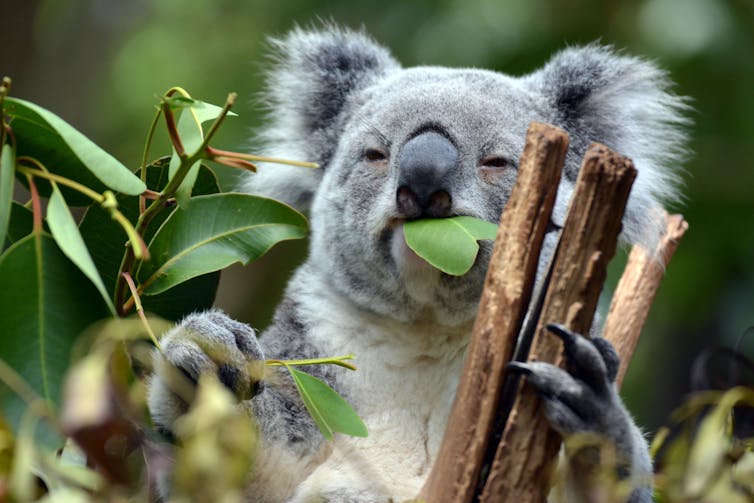
Today, 19 ecosystems show clear signs of collapse. This includes the Great Barrier Reef, savannas, mangroves, tropical rainforests, and tall mountain ash forests. These losses have profound ramifications for clean air and water, productive agriculture, pollination, and well-being.
Biodiversity is a crucial part of Australia’s national identity and Aboriginal culture. It delivers billions of dollars in tourism revenue and underpins most sectors of our economy.
It’s important for our health, too. COVID lockdowns recently brought the critical role of nature to our well-being into sharp focus, with thriving biodiversity shown to deliver avoided costs to the healthcare system.
Ignoring key recommendations
A 2018 Senate inquiry into the extinction crisis of Australian animals (fauna) concluded that native fauna was declining. It found biodiversity protection was under-resourced and failing, and Australia urgently needs an independent environmental regulator.
In 2022, the federal Auditor-General reviewed the government’s implementation of Australia’s threatened species legislation, finding:
limited evidence that desired outcomes are being achieved, due to the department’s lack of monitoring, reporting and support for the implementation of conservation advice, recovery plans.
The national Threatened Species Strategy focuses on 100 species and a few iconic places. But more than 1,800 species and ecosystems are threatened with extinction.
And economic analyses indicate we currently spend about around 7% of the targeted A$1.6 billion per year required to halt species loss and recover nationally listed threatened species.
These findings were reinforced in 2020 by a major independent review of Australia’s environment law – Environment Protection and Biodiversity Conservation (EPBC) Act.
The review by Professor Graeme Samuel made 38 recommendations, but almost none have been implemented. They include establishing an Environment Assurance Commissioner, rigorous national environmental standards and resourcing compliance and enforcement of environmental regulations.
Failure to protect what we have
Land clearing is a key threat to Australian wildlife, yet the government has not made meaningful progress to halt it.
The hectares cleared in New South Wales over the last decade have tripled, and a staggering 2.5 million hectares have been cleared in Queensland between 2000 and 2018.
Worryingly, more than 7.7 million hectares of threatened species habitat have been cleared since the EPBC Act came into force (between 2000 and 2017), including 1 million hectares of koala habitat.
Invasive species – such as cats, foxes, rabbits, deer and buffel grass – continue to wreak havoc on many of our most endangered species.
Cats alone kill 1.7 billion native animals each year and threaten at least 120 species with extinction. While feral predator control has received some focus, the effort still falls well short of what’s required.

Lack of transparency and accountability
Official reviews have consistently found the federal government’s approach to protecting biodiversity lacks transparency and accountability.
Questions have also been raised about the federal government’s delay in releasing its five-yearly State of the Environment Report ahead of the election.
And investigations have raised serious concerns about how the government handled decisions regarding grasslands illegally destroyed by a company part-owned by a government minister.
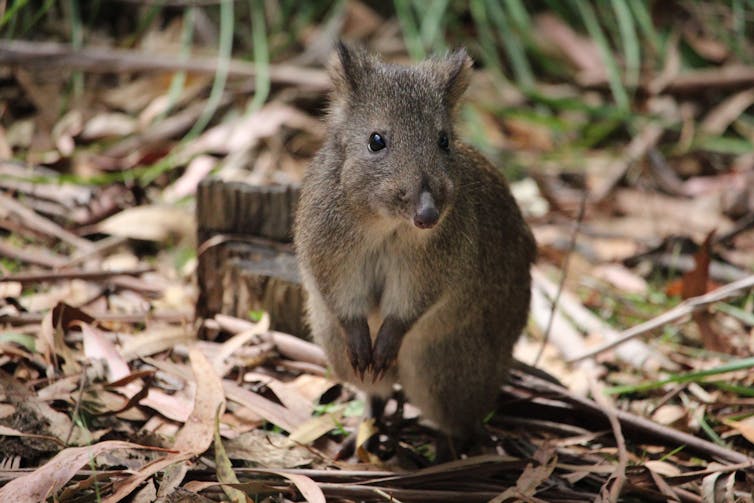
A key advisor to the government recently labelled a major scheme to promote forest restoration as carbon credits as environmental and taxpayer 'fraud'.
A federal integrity commission, if it existed, could have explored these cases.
The government also continues to back activities that cause damage to biodiversity, including the fossil fuel and forestry industries.
On agriculture, the government is pursuing a 'biodiversity stewardship' policy, to financially reward farmers for protecting wildlife.
But ongoing approval of unsustainable land management practices, particularly land clearing (of which agriculture is responsible for the lion’s share) will likely overshadow any stewardship gains.
So what’s needed to prevent future extinctions?
Labor has not yet revealed its full suite of environment policies. This week it told Guardian Australia it will release more details before the election, and has called on the government to release the State of the Environment report.
So what policies are needed to reverse the biodiversity crisis? The answer is: spend more and destroy less.
Just two days of Coalition election promises (estimated at $833 million per day) would fund recovery for Australia’s entire list of threatened species for a year.
Systems for protecting biodiversity need stronger legal mandates and less discretion for ministers to override decisions about project approvals, species listing and other matters.
Biodiversity should be integrated into key aspects of government practice. For example, it makes no sense to invest in protecting koalas while simultaneously approving koala habitat clearing.
And we need investment in every threatened species, not just a hand-picked few.
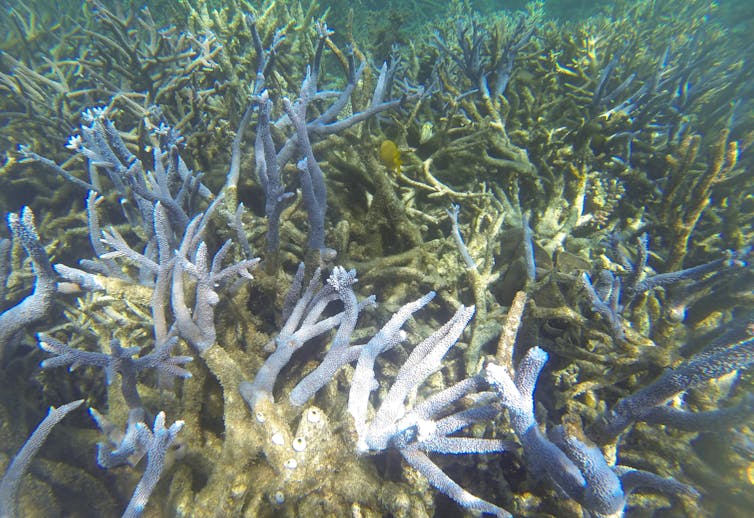
Finally, transformative policies are needed to support the substantial opportunities to enhance and restore biodiversity. This includes:
- using nature to help mitigate climate change
- green recovery of the economy post-COVID
- finding ways to farm profitably while enhancing biodiversity
- designing cities where people and nature can both flourish.
The fate of nature underpins our economy and health. Yet in the election campaign to date, there’s been a deafening silence about it. ![]()
Sarah Bekessy, Professor in Sustainability and Urban Planning, Leader, Interdisciplinary Conservation Science Research Group (ICON Science), RMIT University and Brendan Wintle, Professor in Conservation Ecology, School of Ecosystem and Forest Science, The University of Melbourne
This article is republished from The Conversation under a Creative Commons license. Read the original article.
Hibbertia spanantha, the subject of a study of plant translocation
On 10 May 2022 Chantelle Doyle gave our members a presentation on her extensive PhD work on conserving Hibbertia spanantha. Her work is also investigating threatened species conservation through the practice of translocation. Unfortunately it is inevitable that rare plants are destroyed when a development site is cleared unless they can be moved to a suitable site elsewhere.
H. spanantha was originally known from only four populations in the Sydney Basin Bioregion and is on the Threatened Species Recovery Hub Hottest 100 list of plants most at risk of extinction.
Chantelle’s talk described her analysis of:
- What are the best methods for vegetative and seed propagation of H. spanantha?
- What are the best soil and pre planting treatments?
- What post planting maintenance is required?
This information together can inform the key factors to consider when implementing conservation actions and identify challenges to following best practice translocation guidelines.
The recent issue of the Friends of Lane Cove National Park newsletter, Regenavitis reports on the work of park staff and volunteers in helping with the Ryde planting near the crematorium. They will help care for the plants in the long term through weed suppression and, potentially, ecological burns to facilitate a self-sustaining population through natural recruitment.
Annual research grant
STEP has awarded our annual research grant to Chantelle to assist her with her work. Funds from STEP will enable ongoing monitoring of the three translocated populations (ex situ population at Hornsby and augmentations at Ryde and Cheltenham).
Ku-ring-gai – Urban Forest Strategy
Trees play an important role in defining the character of Ku-ring-gai. Council has been going through a process to develop a new strategy for managing forest over two years. The starting point was an Urban Forest Policy that is a short statement of principles and objectives.
During 2021 feedback was collected from the community and advice sought from expert consultants that have informed a draft Urban Forest Strategy which will define how council manages and improves our urban forest for current and future generations.
Council is now publicly exhibiting the draft document and gathering ideas about how the strategy can be successfully implemented. Have your say now. The closing date is 5 pm on Friday 8 July.
The strategy will cover trees and vegetation in:
- public parks, streets and commercial areas
- private gardens, schools and other developments
- council managed bushland and reserves
The management of the urban forest needs to take into account the whole ecosystem that supports the trees and plants, including the soil and fauna that are essential for the health of the vegetation plus the availability of a water supply.
Ku-ring-gai Council has described the municipality as the ‘green heart’ of Sydney. This creates an attractive environment for residents. Trees also provide many other environmental benefits that are described in the strategy.
The draft Strategy includes ambitious goals to increase the tree canopy coverage. However the urban forest needs to be looked after by all residents. There are pressures that will work against the goals for improving the health and extent of the urban forest such as climate change, development and preferences changing towards very tidy easy-care gardens.
Trad fungus – a promising solution to rampant weed infestations
Tradescantia fluminensis, commonly known as wandering trad is one of the worst weeds in Sydney’s bushland and home gardens. This highly invasive weed rapidly takes over the ground layer in gullies and temporary watercourses, forming a thick blanket of leaves that excludes light and warmth. Trad aggressively smothers low plants and seedlings and cools the soil, preventing native plant germination and regeneration.
This plant spreads vegetatively, no seed is produced. Garden refuse dumped in bushland is a common form of spread. Stem fragments and roots readily wash down waterways or spread in mud from vehicles. Trying to remove trad is a very time-consuming process. Repeated follow up is required because a tiny stem or leaf left behind can regrow.
But now there is hope of a solution, a leaf-smut fungus called Kordyana brasiliensis. This agent was discovered on wandering trad during surveys in Brazil performed by researchers at the Universidade Federal de Viçosa. This exploratory research was part of the biocontrol program for this weed in New Zealand, led by Landcare Research.
After years of testing in Brazil, in New Zealand and in the CSIRO containment facility in Australia, researchers applied for approval to release the leaf smut fungus. They were granted approval by the Department of Agriculture and Water Resources in December 2018.
Researchers first released the leaf smut fungus at ‘nursery sites’ in the Dandenong Ranges during the cooler months of 2019. Nursery sites are areas where our staff will monitor the progress of the biocontrol agent to ensure it can survive and spread in the local area and is having a damaging effect on the wandering trad.
A new project from July 2020 to June 2023, co-funded by CSIRO and the NSW government through its Environmental Trust, is facilitating stakeholders’ releases of the fungus across the range of wandering trad in NSW. The project will also monitor the impact of the fungus on the weed and flow-on indirect impact on other vegetation at several sites during that period.
Ku-ring-gai Council is participating in the project and has released infected trad plants in several sites. It has been spreading rapidly in some sites such as the Gordon Flying Fox Reserve. The very damp conditions experienced over the past few months may be a factor. In other sites the spread has been fairly slow.
How it works
The leaf smut fungus (K. brasiliensis) spreads through spores, and it needs wandering trad leaves to survive. This pathogen enters wandering trad through the leave’s air holes (stomata), and slowly uses the weed’s energy for its own fungal growth. After two to three weeks, the leaves begin to develop yellow spots, caused by a lack of chlorophyll. Eventually the fungal infection is so severe that the wandering trad leaves die. The sick plant becomes less competitive against neighbouring native plants, giving them an advantage, and the opportunity to grow.
Don't worry, it's not another cane toad. It has been carefully tested by the CSIRO and only infects trad and not its close native relative Commelina which has blue flowers. The fungus needs the leaves of the wandering trad to survive – if there is no wandering trad to infect, the fungus dies.
Benefits of biocontrol agents
Biological control is the practice of managing a weed by deliberately using one or more of its natural enemies (biocontrol agents) to suppress it.
Specialised fungi, like the leaf smut, have specific genes that enable them to successfully infect and cause disease only on single or a narrow range of plant species. Testing involved looking at plants that are related to wandering trad including native plants to make sure the fungus will only infect the weed.
CSIRO field biologist Dr Ben Gooden, who is coordinating the rollout of the biocontrol program across Australia, said highly targeted and tested biocontrol agents like the fungus were a more environmentally sustainable option than other available tools. Scientifically tested biocontrol agents like this fungus provide a longer term, environmentally sustainable way of controlling weeds like wandering trad, without harming Australian plants or animals.
Thanks to the Facebook page of the Pittwater Natural Heritage Association and CSIROscope for some of this information.
Consultation on Gardens of Stone draft plans – should the area be a theme park or world class reserve?
In November 2021 the NSW government announced the creation of the Gardens of Stone State Conservation Area. This means this iconic area will be protected to some extent. The risk of further damage from coal mining has been averted but there is the prospect of over-reach with tourist development that could spoil the unique pagoda landscape. See our article on the history of the long campaign to protect this area.
A draft master plan and plan of management have now been released for submission.
The organisation that has been leading the campaign for the protection of this area is the Colong Foundation for Wilderness, now called Wilderness Australia. Click here for details of their many concerns about the proposals and a submission guide.
The closing date is 5 July. Send submissions to This email address is being protected from spambots. You need JavaScript enabled to view it. or Manager, NPWS Planning and Assessment, Locked Bag 5022, Parramatta, NSW 2124.
Potential features of the reserve
The Gardens of Stone State Conservation Area should become one of the best reserves in NSW. The diversity and rarity of its scenery and native flora, and its Aboriginal cultural heritage should be enjoyed by thousands. Lithgow could benefit from the increase in demand for accommodation and visitor facilities.
Wilderness Australia needs your help to ensure that happens, and that its values are not desecrated. Tourism needn’t cut the eyes out of the scenery with a muddle of disconnected and counterproductive proposals.
There are two separate documents under the consultation. A plan of management is statutory and cannot be changed without public consultation. The accompanying draft master plan for visitor management creates a parallel process that has no legal force and can be changed at the will of government. The two drafts do not work cohesively together.
The master plan’s list of intentions is more ambitious than the reserve’s visitor management budget can fund, so it provides no clarity on which park facilities will be built.
Major issues
The major concerns are:
- The main focus should be on nature-focused basic facilities like campgrounds, walking tracks, carparks and lookouts built on already disturbed land and serviced by good 2WD roads that everyone can use. The area is ideal for multi-day walking tracks with basic overnight campsites.
- There should be an emphasis on a 2WD park, with minor provision of 4WD trails where they can be managed sustainably. Instead, there is proposed exclusive 4WD vehicle access to iconic sites, such as Wolgan Falls and the Temple of Doom.
- It is proposed to locate the adventure tourism facilities, the zipline, via ferrata and 4WD access road, in the middle of the Lost City. This will cause a visual blight at Lithgow’s best scenic asset. It should be relocated to State Mine gully and encourage visitation to the State Mine and Railway Museum.
- The draft plan of management for the reserve is vague. Except for pest management strategies, it has few details on nature conservation action. There are no restoration management actions, apart from studies, to spend the very large biodiversity offset fund available for this work.
- Little is said about aboriginal community involvement in reserve management, including through economic opportunities and employment.
- There is too much emphasis on opportunities for private interests, such as private consultation with interest groups on facilities such as additional approved access routes for vehicles, horse and bike riders and up to four glamping accommodation hubs that are subject to secret lease negotiations. It seems the Wollemi Great Walk is being determined in secret by confidential contracts and leases negotiated for private ventures.
A revised, re-published and re-exhibited draft plan of management is required that defines the location and extent of proposed visitor facilities and access on a map, with criteria set out that ensure this work is done in a sustainable manner.
The role of the draft master plan must be to identify, through the public consultation, a set of visitor management actions to be published in a completely revised draft plan of management.
In May 2021 the NSW government announced that the Gardens of Stone will be declared a State Conservation Area. This means this iconic area will be protected to some extent. The risk of further damage from coal mining has been averted but there is the prospect of overreach with tourist development that could spoil the unique pagoda landscape. See STEP Matters, Issue 213 for the history of the long campaign to protect this area.
A draft Master Plan and Plan of Management have been released for submissions. The organisation that has been leading the campaign for the establishment of this national park is the Colong Foundation for Wilderness, now called Wilderness Australia. Click here for details of their many concerns about the proposals and a submission guide.
The closing date is 5 July. Send submissions to This email address is being protected from spambots. You need JavaScript enabled to view it. or Manager, NPWS Planning and Assessment, Locked Bag 5022, Parramatta, NSW 2124.
Potential features of the reserve
The Gardens of Stone State Conservation Area should become one of the best reserves in NSW. The diversity and rarity of its scenery and native flora, and its Aboriginal cultural heritage should be enjoyed by thousands. Lithgow could benefit from the increase in demand for accommodation and visitor facilities.
Wilderness Australia needs your help to ensure that happens, and that its values are not desecrated. Tourism needn’t cut the eyes out of the scenery with a muddle of disconnected and counterproductive proposals.
There are two separate documents under the consultation. A Plan of Management is statutory and cannot be changed without public consultation. The accompanying draft Master Plan for visitor management creates a parallel process that has no legal force and can be changed at the will of government. The two drafts do not work cohesively together.
The Master Plan’s list of intentions is more ambitious than the reserve’s visitor management budget can fund, so it provides no clarity on which park facilities will be built.
Major issues
The major concerns are:
- The main focus should be on nature-focused basic facilities like campgrounds, walking tracks, carparks and lookouts built on already disturbed land and serviced by good 2WD roads that everyone can use. The area is ideal for multi-day walking tracks with basic overnight campsites.
- There should be an emphasis on a 2WD park, with minor provision of 4WD trails where they can be managed sustainably. Instead, there is proposed exclusive 4WD vehicle access to iconic sites, such as Wolgan Falls and the Temple of Doom.
- It is proposed to locate the adventure tourism facilities, the zipline, via ferrata and 4WD access road, in the middle of the Lost City. This will cause a visual blight at Lithgow’s best scenic asset. It should be relocated to State Mine gully and encourage visitation to the State Mine and Railway Museum.
- The draft plan of management for the reserve is vague. Except for pest management strategies, it has few details on nature conservation action. There are no restoration management actions, apart from studies, to spend the very large biodiversity offset fund available for this work.
- Little is said about aboriginal community involvement in reserve management, including through economic opportunities and employment.
- There is too much emphasis on opportunities for private interests, such as private consultation with interest groups on facilities such as additional approved access routes for vehicles, horse and bike riders and up to four glamping accommodation hubs that are subject to secret lease negotiations. It seems the Wollemi Great Walk is being determined in secret by confidential contracts and leases negotiated for private ventures.
A revised, re-published and re-exhibited draft Plan of Management is required that defines the location and extent of proposed visitor facilities and access on a map, with criteria set out that ensure this work is done in a sustainable manner.
The role of the draft Master Plan must be to identify, through the public consultation, a set of visitor management actions to be published in a completely revised draft Plan of Management.
Good news for Byles Creek
In Issue 211 of STEP Matters we wrote about the review being undertaken by Hornsby Council of the planning controls in the Byles Creek area. Local residents have been fighting for years to have the zoning of some large undeveloped lots changed so they cannot be sub-divided into smaller lots leading to clearing of high quality bush that is a wildlife corridor and essential habitat for several threatened species.
The good news is that at the May 2022 meeting Hornsby councillors voted unanimously in favour of implementation of all of the Byles Creek Planning Study recommendations without any changes as below:
- rezone the R2 land within the study area to E4 Environmental Living
- increase the minimum lot size for land to be zoned E4 Environmental Living to 40 hectares
- strengthen the wording of the objectives for minimum lot size, clause 4.1 of the Hornsby Local Environment Plan to protect and enhance existing bushland and significant vegetation
- insert a new Local Provision Clause for Riparian Land into the Hornsby LEP 2013 and provide supporting riparian corridor mapping
- increase community engagement programs targeting the study area
Although there will be more steps along the way with the formal planning proposal etc requiring public comments before it becomes legislation, this has ensured the process will begin.
There are still large lots that will only be protected if they are acquired and conserved. The Byles Creek Valley Union is continuing to meet with our state member, Premier Perrottet to make this happen as promised. However, implementing the study recommendations will improve the level of protection for the rest of the Byles Creek catchment.
Powerful Owl feather identification guide
Dr Holly Parsons and the Powerful Owl team from Birdlife Australia, with financial assistance from a Ku-ring-gai environmental levy grant, have written a fascinating Powerful Owl feather identification guide.
Here is a taste of the information in the guide.
Identifying a species by a single feather can be very challenging. This guide has been designed by the Powerful Owl Project to help you determine if you have found a Powerful Owl feather. We have also included images of other species whose feathers look similar. The guide focuses mostly on wing and tail feathers as they are most often found but we have provided examples of other feathers where available
A feather found on the ground can tell us a lot of useful information. It can pinpoint locations that are important to birds, inform us of movement patterns and can even be used for genetic testing. A simple feather can help direct important conservation efforts!
Feather anatomy
Feathers are remarkably light and strong. They are composed of keratin, which is the same protein that makes up our hair and nails, as well as the scales of reptiles. A feather consists of a central hollow shaft, called a rachis, rather like a tree trunk. The feather shaft has two vanes, flattened parts of the feather attached on either side of the rachis. The vanes are formed by barbs that branch from the rachis like the branches of a tree. These barbs bear barbules that radiate, like the smaller branches of a tree. Tiny hooks on the barbules connect the barbs together to form the flat plane of the feather vane.
When birds preen, they run the length of the feather through their bills, which engages the barbules and shapes the barbs into a vane, making the feather work as one continuous unit. This helps birds to fly, stay warm and repel water.
Collecting feathers (or rather, not)
While it is very tempting to collect feathers that you find, every state and territory in Australia actually has rules and regulations around the collection of bird feathers. In NSW it is illegal to retain a bird specimen or parts of it (including feathers) without the appropriate permission from the NSW National Parks and Wildlife Service.
There is also a very small, but real risk of infection from a number of diseases when coming into contact with wild birds, their secretions, droppings and feathers. So rather than collecting feathers (or other bird parts), simply admire it, take a photo, and leave it in place (unless you are part of a project with the appropriate scientific licence). If you do touch feathers, be sure to wash and sanitise your hands afterwards.
If you find a Powerful Owl feather, please email This email address is being protected from spambots. You need JavaScript enabled to view it. and include a photo and other relevant information such as the date and location.
Some progress on legislation to reduce plastic waste
In June 2021 NSW introduced a Plastics Action Plan. The most visible action is the plan to reduce harmful plastic in the environment. Bans on single use plastics are being introduced but phased in over a longer period compared to many other states.
From 1 June single use lightweight plastic bags are banned. Then from November other single use items are banned such as straws, stirrers, cutlery, plates and bowls, cotton bud sticks and polystyrene trays.
So-called compostable plastic will also be banned. They don't biodegrade unless they're treated in an industrial composting facility. Often, they break down into useless little pieces.
South Australia has led the way in most categories of single-use plastic bans, followed closely by Queensland and the ACT, and now other states are making ground – especially Western Australia, where regulations ban the heavyweight (commonly 15 cent) plastic supermarket bags and helium balloon releases are banned. Queensland was the first to ban polystyrene food ware and plates, cups and bowls (if not enclosed with a lid) and ACT will be the first to ban plastic-stemmed cotton buds (from July 2022).
At this stage it looks like the only thing where NSW may blaze a trail is banning those annoying plastic fruit stickers – if South Australia doesn’t get there first. They are thinking about it!
Another major item is takeaway coffee cups. Only WA is considering a ban at this stage.
NSW is also providing funding for research into improving the recyclability or re-usability of plastic products.
The biggest source of litter – cigarette butts
Despite the significant progress made in reducing smoking in Australia, nearly 18 billion cigarettes are smoked per year and up to half end up as litter. Cigarette butts can end up in our waterways and oceans and leach toxic materials. Butts have been found in the stomachs of birds, turtles, whales and fish, affecting their digestion and potentially leading to poisoning or starvation.
Current efforts to minimise cigarette pollution in Australia have largely focused on solutions directed at the individual smoker, such as disposal infrastructure and education. Continuing this approach would see little or no reduction in butt litter, according to a report commissioned by WWF.
The report says a levy of $0.004 (less than half a cent) per cigarette could raise $71 million per year to fund the product stewardship scheme. Alternatively, tobacco companies could be required to directly fund the scheme. It could boost collection, recovery and reprocessing of cigarette butts, support research and development to potentially ‘design out’ plastic filters, and improve public awareness of the impacts of cigarette pollution. Most people are unaware that butts contain plastic.
The NSW government will investigate a new extended producer responsibility scheme that will make tobacco companies take responsibility for the litter impacts of their products. For example, they may set mandatory litter reduction targets that those companies must meet through a range of approved activities. This work will align with the Australian government’s recently announced taskforce on cigarette butt litter.
Hard plastics can now be taken to the Thornleigh Community Recycling Centre
In great news for the circular economy, the Thornleigh Community Recycling Centre is now able to accept hard plastics! This centre is available for Ku-ring-gai residents as well as Hornsby. Unwanted plastic buckets, crates, washing baskets, bottle caps and lids, toys, DVD and CD cases, plastic plant pots and plastic storage containers are among the plastic items that are presently not accepted in your home yellow-lid recycling bin but can now be taken to the centre where they will find a new life as a bollard, post or pallet.
The plastic items have to meet certain conditions:
- completely made from plastic and contain no metal parts, batteries or electronic components
- less than 20 kg in weight
- less than 1.5 m in length
The centre is at 29 Sefton Road, Thornleigh, is open Tuesday to Friday from 8.30 am to 4 pm and Saturday from 8.30 am to 12 pm.
Turkey rhubarb – another botanical name change
As reported in Regenavitus (newsletter of the Friends of Lane Cove NP), the botanical name of the pesky weed known as Turkey rhubarb has changed from Acetosa sagititta to Rumex sagitittus based on DNA research. Not another name change! Actually it has returned to its original name.
It has always been a mystery as to why this weed has been called Turkey rhubarb. Has it been mixed up with Rheum species that include the edible rhubarb?
According to Wikipedia the first known species is Rheum palmatum. It originated from western China, Tibet and Mongolia. During Islamic times, it was imported along the Silk Road, reaching Europe in the 14th century through the ports of Aleppo and Smyrna, where it became known as ‘Turkish rhubarb’ and also ‘Russian rhubarb’ and ‘Indian rhubarb’.
Its leaves are large, jagged and hand-shaped, growing in width to two feet. It can grow up to 2.5 m tall. So it is nothing like our ‘Turkey rhubarb’ except the flowers a vaguely similar. They didn’t have DNA analysis back in the 14th century. The flowers may be the answer?
It is primarily used in traditional medicine, and as an ornamental subject in the garden. The root of R. palmatum is known for its purported purging effects and suppressing fever. In ancient China, rhubarb root was taken to try to cure stomach ailments and as a ‘cathartic’ (an agent used to relieve constipation) and used as a poultice for ‘fevers and edema’ (swelling caused by fluid retention in the body tissues.
Do those large rhizomes that have to be dug up in order to remove our version of Turkey rhubarb also have medicinal qualities?


